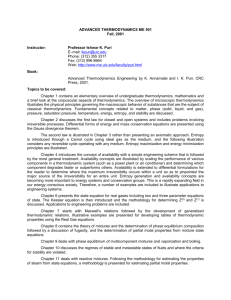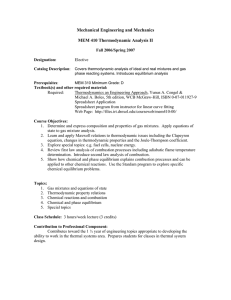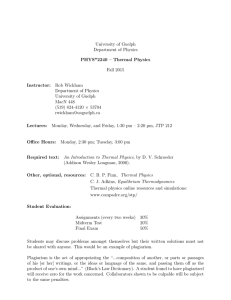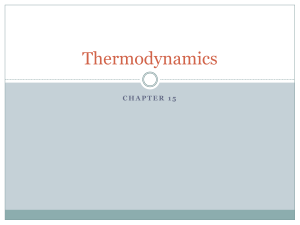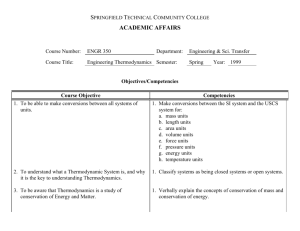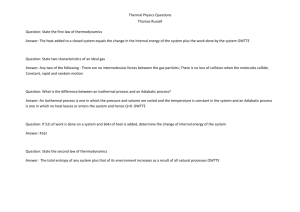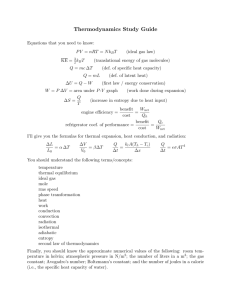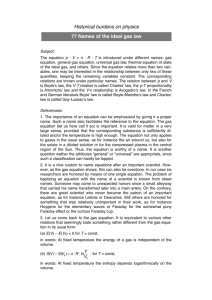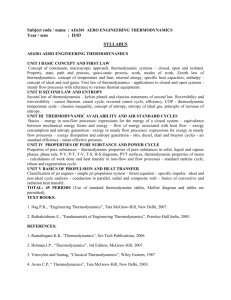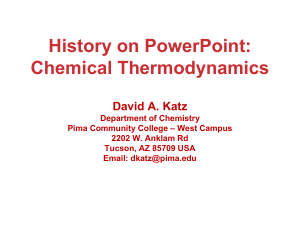PHYS 140-4
advertisement
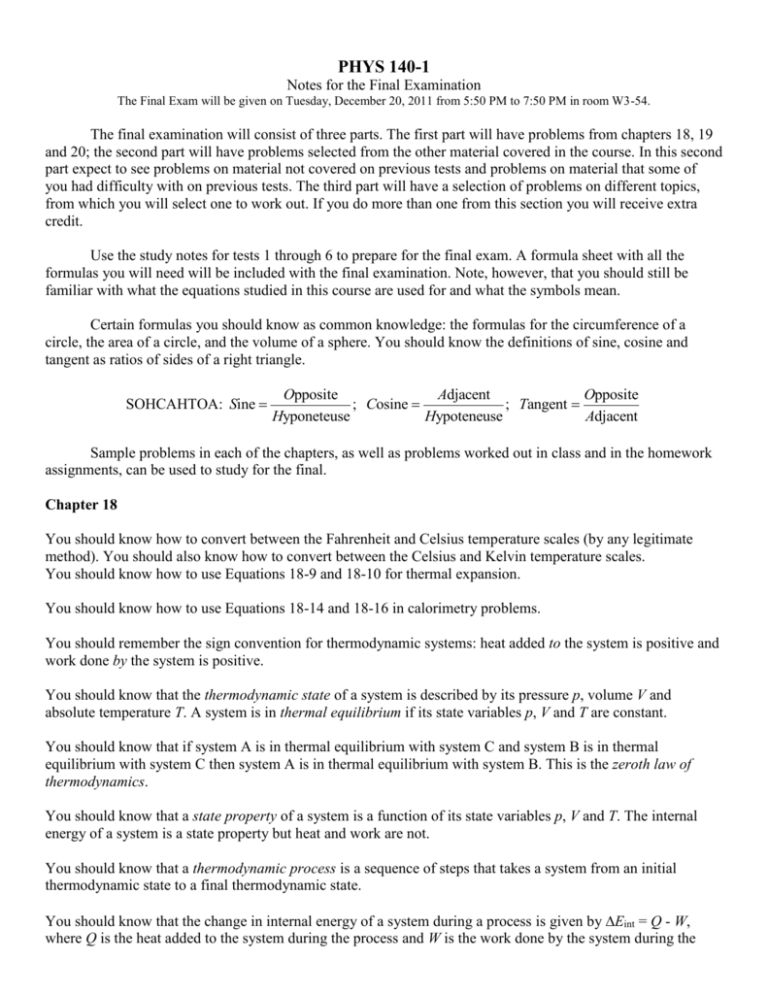
PHYS 140-1 Notes for the Final Examination The Final Exam will be given on Tuesday, December 20, 2011 from 5:50 PM to 7:50 PM in room W3-54. The final examination will consist of three parts. The first part will have problems from chapters 18, 19 and 20; the second part will have problems selected from the other material covered in the course. In this second part expect to see problems on material not covered on previous tests and problems on material that some of you had difficulty with on previous tests. The third part will have a selection of problems on different topics, from which you will select one to work out. If you do more than one from this section you will receive extra credit. Use the study notes for tests 1 through 6 to prepare for the final exam. A formula sheet with all the formulas you will need will be included with the final examination. Note, however, that you should still be familiar with what the equations studied in this course are used for and what the symbols mean. Certain formulas you should know as common knowledge: the formulas for the circumference of a circle, the area of a circle, and the volume of a sphere. You should know the definitions of sine, cosine and tangent as ratios of sides of a right triangle. SOHCAHTOA: Sine Opposite Adjacent Opposite ; Cosine ; Tangent Hyponeteuse Hypoteneuse Adjacent Sample problems in each of the chapters, as well as problems worked out in class and in the homework assignments, can be used to study for the final. Chapter 18 You should know how to convert between the Fahrenheit and Celsius temperature scales (by any legitimate method). You should also know how to convert between the Celsius and Kelvin temperature scales. You should know how to use Equations 18-9 and 18-10 for thermal expansion. You should know how to use Equations 18-14 and 18-16 in calorimetry problems. You should remember the sign convention for thermodynamic systems: heat added to the system is positive and work done by the system is positive. You should know that the thermodynamic state of a system is described by its pressure p, volume V and absolute temperature T. A system is in thermal equilibrium if its state variables p, V and T are constant. You should know that if system A is in thermal equilibrium with system C and system B is in thermal equilibrium with system C then system A is in thermal equilibrium with system B. This is the zeroth law of thermodynamics. You should know that a state property of a system is a function of its state variables p, V and T. The internal energy of a system is a state property but heat and work are not. You should know that a thermodynamic process is a sequence of steps that takes a system from an initial thermodynamic state to a final thermodynamic state. You should know that the change in internal energy of a system during a process is given by Eint = Q - W, where Q is the heat added to the system during the process and W is the work done by the system during the process. This is the first law of thermodynamics. You should know the definition of a reversible process: a process for which a system is in thermal equilibrium at each step. You should be familiar with pV diagrams and know how to determine the sign of the work done by a system when it undergoes a reversible process. You should know that an isothermal process is a process carried out on a system at constant temperature, that an isometric process is a process carried out at constant volume and that an isobaric process is a process carried out at constant pressure. You should also know that an adiabatic process is a process carried out on a system where the system exchanges no heat with its environment. Chapter 19 You should be familiar with the ideal gas law, Equation 19-5, Boltzmann’s constant, Equation 19-7, the molar specific heats at constant volume ( CV ) and constant pressure ( CP ) and Equation 19-49. You should also be familiar with the internal energy of an ideal gas, Equation 19-44, and the relation between pressure and volume C for an adiabatic process, Equation 19-53, where P . CV Chapter 20 You should be familiar with entropy and the formula for calculating the change of entropy, Equation 20-1. You should know that if a process occurs in a closed system, the entropy of the system increases for an irreversible process and remains constant for reversible processes: S 0 . This is the second law of thermodynamics. You should be familiar with heat engines and the Carnot cycle. You should be able to draw the Carnot cycle on a pV diagram and be able to identify the four parts of its cycle. You should know that the area enclosed by the cycle is the work done by the engine on its environment. You should also be familiar with calculations of f d Q changes of entropy using S . i T You should you know what is meant by the efficiency of a heat engine and Equations 20-11 and 20-12. You should know the formula for the efficiency of a Carnot engine, Equation 20-13. You should know the definitions of a refrigerator and the coefficient of performance, Equations 20-14 and 2015. You should know the formula for the coefficient of performance of the Carnot refrigerator, Equation 20-16. You should be familiar with the four statements of the second law of thermodynamics given in class. ______________________
